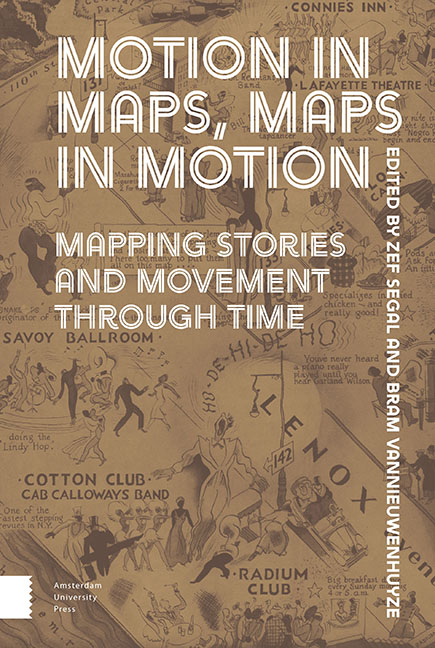Book contents
- Frontmatter
- Contents
- List of Figures
- List of Diagrams
- Introduction
- 1 The New World Map and the Old; The Moving Narrative of Joan Blaeu’s Nova Totius Terrarum Orbis Tabula (1648)
- 2 Entangled Maps; Topography and Narratives in Early Modern Story Maps*
- 3 Flow Mapping through the Times; The Transition from Harness to Nazi Propaganda
- 4 The Tensions of Heterochronicity on Cartographies of Imperial Motion in Japan
- 5 A School Atlas as a History Machine: The Bosatlas Online
- 6 Facebook Cartographies and the Mapping of Local History; Storied Maps from the American Middletown
- 7 ‘Change-of-State’ in the History of Cartography
3 - Flow Mapping through the Times; The Transition from Harness to Nazi Propaganda
Published online by Cambridge University Press: 20 November 2020
- Frontmatter
- Contents
- List of Figures
- List of Diagrams
- Introduction
- 1 The New World Map and the Old; The Moving Narrative of Joan Blaeu’s Nova Totius Terrarum Orbis Tabula (1648)
- 2 Entangled Maps; Topography and Narratives in Early Modern Story Maps*
- 3 Flow Mapping through the Times; The Transition from Harness to Nazi Propaganda
- 4 The Tensions of Heterochronicity on Cartographies of Imperial Motion in Japan
- 5 A School Atlas as a History Machine: The Bosatlas Online
- 6 Facebook Cartographies and the Mapping of Local History; Storied Maps from the American Middletown
- 7 ‘Change-of-State’ in the History of Cartography
Summary
Abstract
One of the most commonly used types of maps today are flow maps, which simultaneously depict movement in time, place, and volume on a geographical map, as seen in GPS navigation devices. This type of map-making was invented independently during the 1830-1840s by three railway engineers from the United Kingdom, Belgium, and France. However, as this chapter argues, the growing popularity of the genre had little to do with the intent of the three pioneers. By looking at the context, in which flow maps appeared, rather than the technique used to design them, the chapter shows the importance of culture, politics, and ideology in understanding the changing meanings of flow maps during the nineteenth and twentieth centuries.
Keywords: Flow map; atlases; nineteenth century; colonialism; English cartography; German cartography; American cartography
Introduction
One of the most commonly used types of maps today are flow maps, which simultaneously depict movement in time, place, and volume on a geographical map, as seen in GPS navigation devices. Flow maps were first introduced in 1837 but only became popularized during the second quarter of the twentieth century. Based on the collection of nineteenth- and twentieth-century European and American atlases in the Library of Congress, this chapter examines the developing popularity of flow maps as a graphical method since the mid-nineteenth century.
Historiography of cartography, like historiographies of other sciences and arts, focuses on the innovators and pioneers of the field. However, despite the obvious importance of these trailblazers, they rarely cause the dissemination and popularization of new techniques. I will start by describing the first cartographers, who invented flow maps independently in the United Kingdom, Belgium, and France. Yet, flow maps became something completely different from what they initially intended to be. The introduction of flow maps in commercial atlases appeared much later, in places that had little to do with those original innovators, and reflected themes that were radically different from those present in the pioneering flow maps. The history discussed here is not a linear one of scientific progress, but rather an erratic history of changing paradigms, with no single scientific milestone to mark the point of change.
- Type
- Chapter
- Information
- Motion in Maps, Maps in MotionMapping Stories and Movement through Time, pp. 81 - 104Publisher: Amsterdam University PressPrint publication year: 2020
- 1
- Cited by



